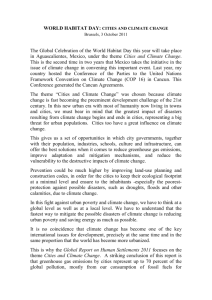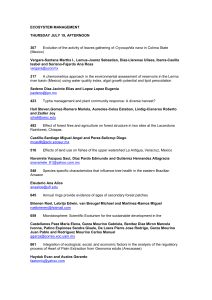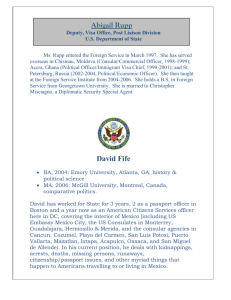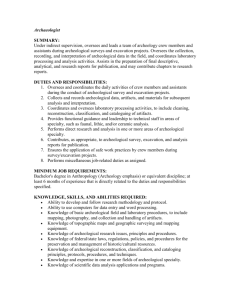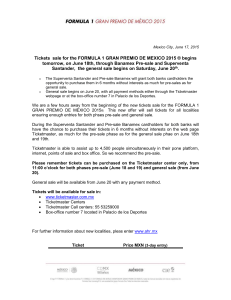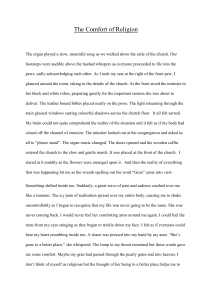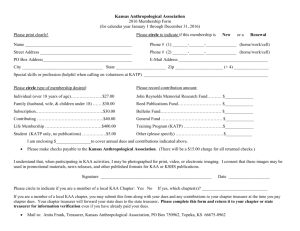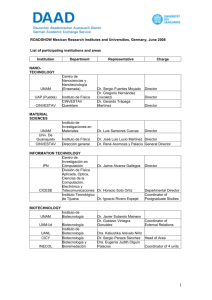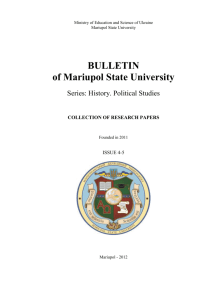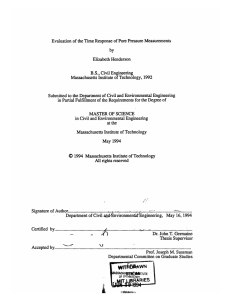Title of this paper / Titre de votre manuscrit
advertisement
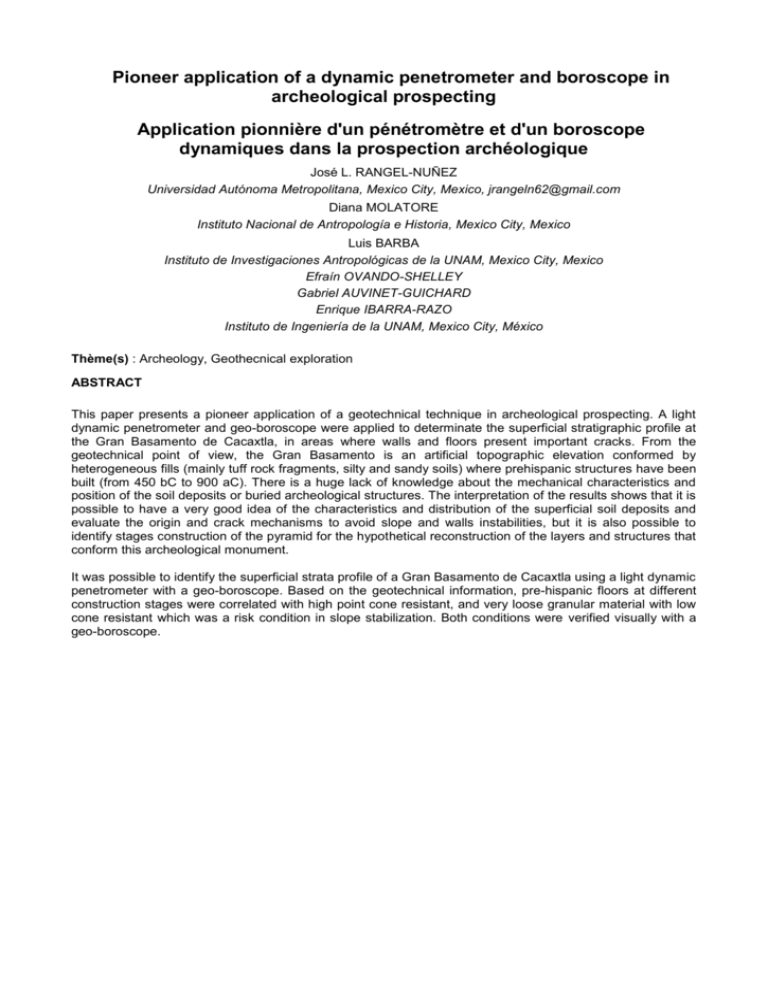
Pioneer application of a dynamic penetrometer and boroscope in archeological prospecting Application pionnière d'un pénétromètre et d'un boroscope dynamiques dans la prospection archéologique José L. RANGEL-NUÑEZ Universidad Autónoma Metropolitana, Mexico City, Mexico, jrangeln62@gmail.com Diana MOLATORE Instituto Nacional de Antropología e Historia, Mexico City, Mexico Luis BARBA Instituto de Investigaciones Antropológicas de la UNAM, Mexico City, Mexico Efraín OVANDO-SHELLEY Gabriel AUVINET-GUICHARD Enrique IBARRA-RAZO Instituto de Ingeniería de la UNAM, Mexico City, México Thème(s) : Archeology, Geothecnical exploration ABSTRACT This paper presents a pioneer application of a geotechnical technique in archeological prospecting. A light dynamic penetrometer and geo-boroscope were applied to determinate the superficial stratigraphic profile at the Gran Basamento de Cacaxtla, in areas where walls and floors present important cracks. From the geotechnical point of view, the Gran Basamento is an artificial topographic elevation conformed by heterogeneous fills (mainly tuff rock fragments, silty and sandy soils) where prehispanic structures have been built (from 450 bC to 900 aC). There is a huge lack of knowledge about the mechanical characteristics and position of the soil deposits or buried archeological structures. The interpretation of the results shows that it is possible to have a very good idea of the characteristics and distribution of the superficial soil deposits and evaluate the origin and crack mechanisms to avoid slope and walls instabilities, but it is also possible to identify stages construction of the pyramid for the hypothetical reconstruction of the layers and structures that conform this archeological monument. It was possible to identify the superficial strata profile of a Gran Basamento de Cacaxtla using a light dynamic penetrometer with a geo-boroscope. Based on the geotechnical information, pre-hispanic floors at different construction stages were correlated with high point cone resistant, and very loose granular material with low cone resistant which was a risk condition in slope stabilization. Both conditions were verified visually with a geo-boroscope.



